Just two days now until we open our doors to a bright new spring…
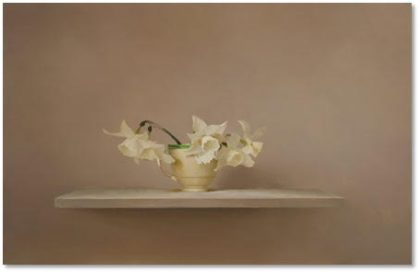
I am hoping that people will now have a spring in their step, and that there is an art-hungry audience out there chomping at the bit to visit a gorgeous town like Bath.
Especially now, when parking has never been easier with the lack of coach-loads of international visitors thronging the town.
Whilst recognising the danger of falling back on the treasure hoard of literature from the other place (I can’t go on…….I’ll go on…’ etc etc) in the spirit of renewal, and arising and going, there is only one possible poetic interlude
I will arise and go now, and go to Innisfree,
And a small cabin build there, of clay and wattles made;
Nine bean-rows will I have there, a hive for the honey-bee,
And live alone in the bee-loud glade.
And I shall have some peace there, for peace comes dropping slow,
Dropping from the veils of the morning to where the cricket sings;
There midnight’s all a glimmer, and noon a purple glow,
And evening full of the linnet’s wings.
I will arise and go now, for always night and day
I hear lake water lapping with low sounds by the shore;
While I stand on the roadway, or on the pavements grey,
I hear it in the deep heart’s core.
I think it likely we all have a place like this in us – for Yeats it was Inisfree, in Lough Gill, just north of Sligo.
In the last verse he talks about the peace of Lough Gill as he is walking the pavements of towns and cities.
I wonder if he thought of Innisfree when he once visited Oscar Wilde at his home in Tite Street in South West London.
The apparently more worldly Wilde teased Yeats about his white suit and shoes.
Wilde once said that the first duty in life is to assume a pose. What the second is, no one has yet discovered.
I read this aphorism again recently, and thought of it yesterday whilst looking at Nathan Ford’s Lockdown series of paintings, with the painter himself.
Like everyone else I come to the individual works with prerequisites, already making judgements, the old saw, I don’t really like still lifes but…….
What is more is that the show includes 90 paintings of weeds to look at. I am wanting colour, wanting to identify the plants and flowers, wanting to bring what I know about Nathan and his work to these new drawings.
In fact what I most think of when considering these little gems is that one gets rewarded over time. They take time and consideration to do, and time taken to look, especially at less obvious details, is just as rewarding.
On the year anniversary of this painting I had a close look:
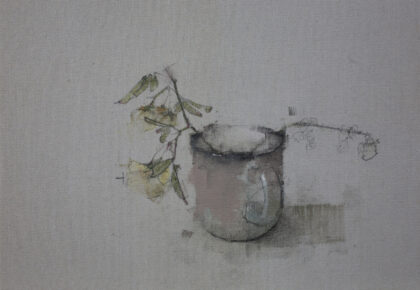
Nathan’s primed canvas gives a tactile touch that is sympathetic to his pencil drawing. So the little threads and curlicues of the desiccated fern can be seen against the canvas weave.
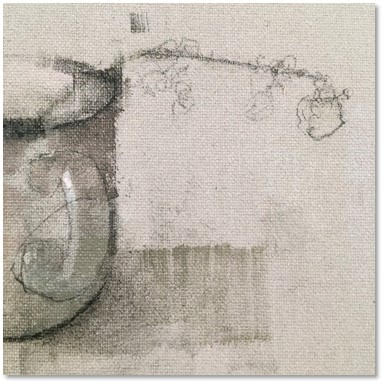
And the smudged colours of flowers persist under the drying leaves.
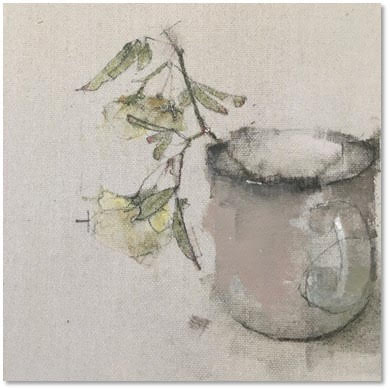
That little highlight on the rim is barely discernible on the rim of the enamel cup…
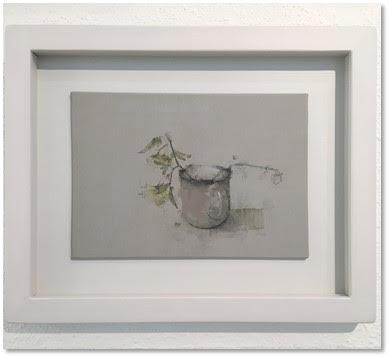
Suffice to say the Lockdown paintings themselves are an show within a show. And I have neglected to mention in this message the genius of the larger works.
These paintings (and for that matter, the Helen Simmonds at the top of this message) are a further reminder that peace comes dropping slow.
A couple of hours drive south of Lough Gill you can see the national famine monument at Murrisk, on the road to Louisburgh. Opened by Irish president Mary Robinson in 1997 it features a large John Behan sculpture:
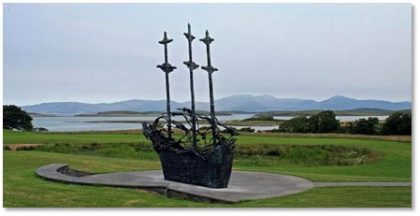
A selection of John’s boats are on display in the gallery at present:
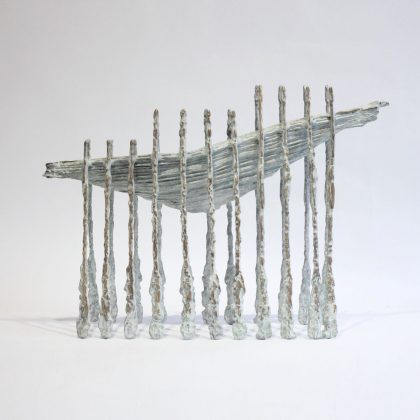
And finally,
Keeping an eye on everyone upstairs in the gallery is this bronze fellow:
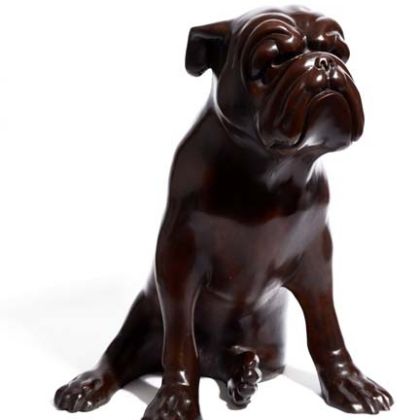
The sculptor Anthony Scott has lived and worked in the Sligo area for years, in the shadow of Ben Bulben, and near the great poets final resting place (Drumcliff).
So it is fitting that we should sign off with this sculpture, named for a king of the west of Ireland in mythology times, with a name Tadgh that means ‘poet’.
Cast a cold eye on Life on Death.
Horseman ride by.
Thank you for reading.
Aidan